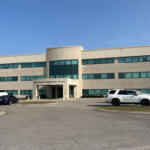UroNav Prostate Biopsy
By combining MRI images with ultrasound, UroNav creates detailed, 3-D images of the prostate for more accurate biopsies and in difficult-to-reach areas.
UroNav Technology: MRI and Ultrasound Fusion
UroNav combines the benefits of an MRI with ultrasound to create a detailed, 3-D view of the prostate. By allowing physicians to see the prostate in this way, they can identify suspicious areas, and then target them for biopsy. UroNav brings the power of MRI to the Urology suite as prostate and lesion segmentation data from Radiology are quickly and easily transferred to UroNav for review and target identification.
Who is UroNav for?
UroNav is for any patient undergoing a biopsy of their prostate to test for prostate cancer, but UroNav can be particularly beneficial for patients who are under active surveillance, have PSA persistence, and who have regions of interest in areas that are difficult to biopsy.
Active Surveillance Patients
Some prostate cancer patients have a low-risk type of cancer that grows slowly. With this type, treatment may not be necessary and can lead to unnecessary side effects. During “Active Surveillance,” the patient will be regularly monitored through PSA (Prostate-Specific Antigen) tests, digital rectal exams, imaging tests, and biopsies to track any changes in their cancer.
Fewer and More Targeted Biopsies
For patients on active surveillance, UroNav enables targeted biopsies of specific areas of concern identified on MRI, ensuring that any changes in the prostate are precisely evaluated.
This approach helps reduces the amount of biopsies needed, minimizing discomfort and risk of complications.
Uronav provides 30% improvement in diagnosis of high-risk prostate cancer compared to standard biopsy.1
Peace of Mind
Help doctors and patients make more informed decisions about whether to continue with active surveillance or proceed with additional treatment based on the most accurate information available.
Whether they are told that they don’t need additional treatment or that they need to follow-up with additional care, patients receive the peace of mind that comes with knowing they are proactively and appropriately treating their disease.
PSA Persistence
Patients who have consistently high PSA levels but have negative traditional biopsies are referred to as having “PSA persistence.” This can be challenging and requires ongoing monitoring or additional diagnostic testing to rule out or confirm the presence of prostate cancer.
Techniques like UroNav can help identify suspicious areas that might have been missed in initial biopsies.
Difficult-to-Reach Biopsy Sites
Prostate cancer can appear in difficult-to-reach regions, such as the front (anterior) part of the prostate, the top part near the bladder (apical), and the central part of the prostate. Advanced imaging techniques like UroNav help target these challenging biopsy sites more accurately, improving the chances of obtaining a representative tissue sample and reducing the likelihood of missed diagnoses.
What are the Benefits of UroNav?
- Provides a 3-D view of the prostate, clarity that is otherwise unavailable—reducing the risk of overlooking a tumor
- Improves diagnosis accuracy, which leads to better treatment options and outcomes
- Incorporates a GPS-like system to guide the biopsy needle to suspicious areas
- Reduces the number of tissue samples taken from the prostate
- Reduces discomfort and gives peace of mind for patient
- Targeted biopsies help to eliminate the need for multiple, random (or blind) biopsies
- Targeted biopsies may help to detect aggressive tumors that could have been missed with a blind biopsy
What is the Process of Getting UroNav?
First, the urologist will order an MRI of the prostate. This helps them look for “regions of interest.” Singing River’s radiologists have extensive training on reading regions of interest. The radiologist helps determine if there are areas that should be biopsied.

Next, the patient is receives light sedation and undergoes ultrasound imaging. Finally, UroNav combines the MRI scan and ultrasound imaging, showing the urologist exactly where they need to biopsy and guiding them to that area with real-time imaging.
How to Receive UroNav
If you have elevated PSA levels, previous negative biopsies but suspicion of prostate cancer, or suspicious areas identified on an MRI, UroNav may benefit you. Contact a Urology Associates office to make a first appointment in Gulfport or Ocean Springs.
1. Siddiqui MM, Rais-Bahrami S, Turkbey B, et al. Comparison of MR/ Ultrasound Fusion-Guided Biopsy With Ultrasound-Guided Biopsy for the Diagnosis of Prostate Cancer. JAMA. 2015;313(4):390-397.

